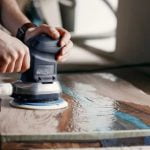White woodwork can add a touch of elegance and brightness to any home. However, keeping it clean and pristine can be a challenge. If you’ve ever asked yourself, “How do I clean white woodwork?” then this article is for you. Maintaining clean white woodwork is essential not only for aesthetic reasons but also for the longevity of the material.
White woodwork, whether it’s baseboards, trim, cabinets, or furniture, is prone to dirt, dust, and stains that can easily diminish its beauty. Regular cleaning not only keeps your white woodwork looking its best but also helps prevent deterioration over time. Understanding the types of white woodwork commonly found in homes is crucial as different materials may require specific cleaning methods to avoid damage.
In this article, we will explore the tools and materials needed to effectively clean white woodwork without causing harm to its surface. From common household items to specialized products, having the right cleaning supplies is key to achieving spotless white woodwork. Following a step-by-step guide on proper cleaning techniques, we will discuss how to remove tough stains and discoloration while sharing tips on maintaining and protecting your white woodwork for long-lasting beauty.
Understanding the Types of White Woodwork Commonly Found in Homes
White woodwork is a popular choice in many homes due to its classic and versatile appearance. Understanding the different types of white woodwork commonly found in homes can help you choose the appropriate cleaning methods and products to maintain their pristine condition. Here are some common types of white woodwork you may encounter:
- Baseboards: Baseboards are installed along the bottom of walls where they meet the flooring. They can accumulate dust, dirt, and scuff marks over time.
- Trim: Trim refers to decorative moldings around windows, doors, and ceilings. It adds a finishing touch to a room but can also collect dust and grime.
- Cabinets: White cabinets in kitchens or bathrooms can easily show dirt, grease, and food stains. Regular cleaning is essential to keep them looking bright.
Knowing the specific type of white woodwork in your home will help determine the most effective cleaning techniques for each surface. Whether it’s baseboards, trim, or cabinets, proper maintenance is crucial to ensure they stay looking their best.
When tackling the task of cleaning white woodwork, many homeowners wonder “how do I clean white woodwork without causing damage?” By using the right tools and materials, you can effectively clean these surfaces without harming their finish or paint. Here are some essential tools and materials you’ll need:
- Mild soap or detergent
- Microfiber cloths or soft sponges
- Gentle cleaning solution specifically formulated for painted surfaces
- Soft-bristled brush for detailed areas
With the proper tools in hand, you can confidently tackle cleaning your white woodwork knowing that you are taking steps to preserve their beauty for years to come.
Tools and Materials Needed for Cleaning White Woodwork Effectively
To clean white woodwork effectively, you will need the right tools and materials to ensure a thorough job without causing any damage to the surface. Here is a list of essential items you will need:
- Microfiber cloths: These are gentle enough to use on white woodwork without scratching or leaving lint behind.
- White vinegar: A natural and effective cleaner for removing dirt and grime from wood surfaces.
- Mild dish soap: Ideal for cleaning painted or varnished woodwork without causing any discoloration.
- Soft-bristled brush or sponge: Perfect for gently scrubbing stubborn stains without damaging the wood.
- Wood cleaner or polish: Specifically designed for cleaning and protecting wood finishes.
Now that you have gathered the necessary tools and materials, here is a step-by-step guide on how to clean white woodwork safely:
- Start by dusting the woodwork with a microfiber cloth to remove any loose dirt or debris.
- Mix a solution of warm water and mild dish soap in a bucket.
- Dip the soft-bristled brush or sponge into the soapy water and gently scrub the woodwork in small sections.
- For tougher stains, mix equal parts white vinegar and water in a spray bottle and spritz directly onto the affected areas before wiping clean with a damp cloth.
- Once you have cleaned the entire surface, dry it off with a clean microfiber cloth to prevent water spots.
By following these steps and using the right tools and materials, you can effectively clean your white woodwork without causing any damage to its finish. Remember to take care when cleaning delicate surfaces and always test any new products in an inconspicuous area first before applying them widely.
Step-by-Step Guide on Cleaning White Woodwork Without Damaging the Surface
White woodwork adds a touch of elegance and brightness to any home, but it can be a challenge to keep it clean and pristine. To maintain the beauty of your white woodwork, regular cleaning is essential. But the question remains: How do I clean white woodwork without causing damage to the surface?
The first step in cleaning white woodwork is to gather the necessary tools and materials. You will need a soft microfiber cloth or sponge, a bucket of warm water, mild dish soap or white vinegar, and a soft-bristled brush for hard-to-reach areas. Avoid using harsh chemicals or abrasive cleaners that can strip away the paint or finish on your woodwork.
To begin cleaning your white woodwork, start by dusting the surface with a dry microfiber cloth to remove any loose debris. Then, mix a small amount of mild dish soap or white vinegar in warm water to create a gentle cleaning solution. Dip the cloth or sponge into the solution and wring out any excess liquid before wiping down the woodwork in gentle circular motions.
For tough stains or discoloration on your white woodwork, you can use a soft-bristled brush dipped in the cleaning solution to gently scrub the affected area. Be careful not to scrub too hard as this can damage the paint or finish. Once you have removed the stains, rinse the area with clean water and dry it thoroughly with a clean microfiber cloth to prevent water damage.
| Tools and Materials | Usage |
|---|---|
| Soft microfiber cloth or sponge | For wiping down surfaces |
| Bucket of warm water | To mix with mild dish soap or white vinegar |
| Mild dish soap or white vinegar | For creating a gentle cleaning solution |
Tips for Removing Tough Stains and Discoloration From White Woodwork
White woodwork adds a touch of elegance and sophistication to any home, but keeping it clean can sometimes be a challenge. Tough stains and discoloration on white woodwork can detract from its beauty if not properly addressed. So, how do I clean white woodwork effectively without causing damage? Here are some tips to help you remove stubborn stains and discoloration from your white woodwork.
To tackle tough stains on your white woodwork, start by identifying the type of stain you are dealing with. Different types of stains require different cleaning solutions or methods. For example, water-based stains may come off with a mild detergent solution, while oil-based stains might need a stronger cleaner. Always test any cleaning solution on a small, inconspicuous area before applying it to the entire surface to avoid damaging the woodwork.
One effective way to remove tough stains from white woodwork is by using a paste made of baking soda and water. Simply apply the paste to the stained area, let it sit for a few minutes, and then gently scrub with a soft brush or cloth.
The mild abrasiveness of baking soda helps lift the stain without harming the wood surface. For more stubborn discoloration, consider using a mixture of vinegar and water or a commercial wood cleaner specifically designed for white wood surfaces.
| Tips for Removing Tough Stains | Discoloration From White Woodwork |
|---|---|
| Identify the type of stain | Use baking soda paste for mild stains |
| Test cleaning solutions first | Try vinegar and water mixture for stubborn discoloration |
How to Properly Maintain and Protect White Woodwork to Prevent Future Stains
Maintaining and protecting white woodwork is essential to preserve its appearance and extend its lifespan. Proper care will not only keep your woodwork looking clean and fresh but also prevent future stains and damage. In this section, we will discuss the best practices for maintaining white woodwork to avoid common issues such as discoloration, scratches, and water damage.
Regular Dusting and Cleaning
One of the most effective ways to maintain white woodwork is by regularly dusting and cleaning it. Dust can accumulate on the surface of woodwork, making it look dull and dirty over time. Use a soft cloth or a microfiber duster to gently remove dust from the surface of the woodwork. For more thorough cleaning, you can lightly dampen the cloth with water or a mild wood cleaner specially formulated for white surfaces.
Avoiding Harsh Cleaners
When cleaning white woodwork, it’s important to avoid using harsh chemicals or abrasive cleaners that can damage the finish. Opt for gentle, non-abrasive cleaners that are safe for painted or stained surfaces. Always test any new cleaner on a small, inconspicuous area before applying it to the entire surface to ensure that it does not cause any discoloration or damage.
Protecting Against Moisture
Moisture is one of the biggest threats to white woodwork as it can lead to warping, discoloration, and mold growth. To protect your white woodwork from moisture damage, make sure to wipe up spills promptly and use coasters or mats under glasses and vases.
You may also consider applying a protective sealant or topcoat to create a barrier against moisture infiltration. Regularly inspect your white woodwork for signs of water damage and address any issues promptly to prevent further staining or deterioration.
By following these maintenance tips and protecting your white woodwork from potential stains, you can enjoy beautiful and pristine surfaces in your home for years to come. Regular care and attention will not only enhance the aesthetics of your space but also prolong the life of your white wood trim, baseboards, cabinets, or furniture pieces.
Eco-Friendly and Natural Cleaning Solutions for White Woodwork
White woodwork adds a touch of elegance and brightness to any home, but keeping it clean can sometimes be a challenge. Many commercial cleaning products may contain harsh chemicals that can damage or discolor white woodwork over time. Luckily, there are eco-friendly and natural cleaning solutions that can effectively clean white woodwork without causing harm to the surface. Here are some tips on using these safer alternatives to maintain your white woodwork’s pristine appearance.
Vinegar and Water Solution
One of the most common natural cleaning solutions for white woodwork is a mixture of vinegar and water. Simply mix equal parts of distilled white vinegar and water in a spray bottle, then spray the solution onto a microfiber cloth or sponge. Gently wipe down the white woodwork, making sure to dry immediately afterward with a clean, dry cloth to prevent water damage.
Baking Soda Paste
For tougher stains or dirt buildup on white woodwork, you can create a baking soda paste by mixing baking soda with water until it forms a thick consistency. Apply the paste to the stained areas and let it sit for a few minutes before gently scrubbing with a soft brush or cloth. Rinse with water and dry thoroughly to reveal cleaner and brighter white woodwork.
Lemon Juice and Olive Oil Polish
To add shine and protection to your white woodwork, consider using a natural polish made from lemon juice and olive oil. Mix one part lemon juice with two parts olive oil in a container, then apply a small amount onto a soft cloth. Buff the mixture onto the white woodwork in circular motions for added luster and protection against future stains. This natural polish leaves behind a fresh, citrus scent while enhancing the beauty of your woodwork.
Using eco-friendly and natural cleaning solutions not only helps maintain the cleanliness of your white woodwork but also contributes to a healthier indoor environment for you and your family. By incorporating these simple yet effective alternatives into your cleaning routine, you can enjoy beautifully maintained white woodwork without worrying about harmful chemicals damaging its surface over time.
Common Mistakes to Avoid When Cleaning White Woodwork
When it comes to cleaning white woodwork, there are certain mistakes that should be avoided in order to maintain the pristine appearance of these surfaces. One common mistake is using abrasive cleaners or harsh chemicals, as they can damage the finish of the woodwork over time. Instead, opt for gentle cleaning solutions that are specifically designed for use on wood surfaces.
Another mistake to avoid is neglecting regular cleaning and maintenance. White woodwork is prone to dirt, dust, and grime buildup, especially in high-traffic areas of the home. By regularly dusting and wiping down white woodwork, you can prevent the accumulation of these particles and keep your surfaces looking fresh and clean.
It is also important to avoid using excessive water when cleaning white woodwork. Wood is a porous material, and excess moisture can cause warping, swelling, or discoloration over time. When cleaning white woodwork, use a damp cloth or sponge rather than soaking the surface with water. Additionally, always dry the surface thoroughly after cleaning to prevent damage. By avoiding these common mistakes, you can effectively clean and maintain your white woodwork for years to come.
Conclusion
Regular cleaning and maintenance of white woodwork in homes is crucial to preserving its beauty and extending its lifespan. From baseboards to trim, keeping these surfaces clean not only enhances the overall aesthetic of a room but also prevents damage from dirt buildup, stains, and discoloration. By following the proper cleaning techniques and using the right tools, homeowners can easily maintain their white woodwork for years to come.
Understanding the types of white woodwork commonly found in homes, such as painted trim or stained baseboards, allows individuals to tailor their cleaning approach accordingly. Whether using a gentle solution for painted surfaces or a specialized cleaner for stained woodwork, it is essential to select the appropriate tools and materials for the job. This ensures effective cleaning without causing any damage to the wood surface.
In conclusion, regular cleaning and maintenance are key components of caring for white woodwork in homes. By following a step-by-step guide, utilizing eco-friendly solutions, and avoiding common mistakes, homeowners can effortlessly keep their white woodwork looking pristine. Remember that proper maintenance not only enhances the visual appeal of your home but also protects your investment in quality woodwork.
So next time you wonder “How do I clean white woodwork? “, refer back to these tips for a sparkling finish every time.
Frequently Asked Questions
What Is the Best Cleaner for White Woodwork?
The best cleaner for white woodwork is a mild soap and water solution. Avoid using harsh chemicals or abrasive cleaners that can damage the finish of the wood. Simply mix some dish soap with water, dampen a cloth, and gently wipe down the woodwork to remove any dirt or grime.
What Is the Best Way to Clean White Painted Woodwork?
The best way to clean white painted woodwork is to start with a gentle cleaner like dish soap and water. Mix the solution, dampen a cloth, and wipe down the painted surface. For stubborn stains or grease buildup, you may need to use a specialized wood cleaner. Always test in an inconspicuous area first before applying to the entire surface.
How Do You Get White Wood White Again?
To get white wood looking white again, you can try a few different methods depending on the level of discoloration. For general cleaning, use a mixture of vinegar and water to brighten the wood.
If deeper cleaning is needed, consider using baking soda paste or a commercial wood brightener following the manufacturer’s instructions. Sanding and refinishing may also be necessary for severely discolored woodwork.

Hi everyone! I’m a woodworker and blogger, and this is my woodworking blog. In my blog, I share tips and tricks for woodworkers of all skill levels, as well as project ideas that you can try yourself.





